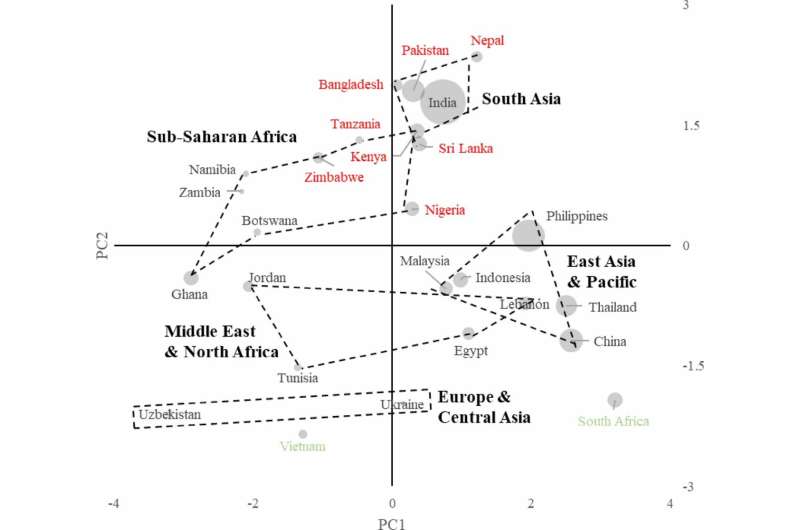This article has been reviewed according to Science X's editorial process and policies. Editors have highlighted the following attributes while ensuring the content's credibility:
fact-checked
peer-reviewed publication
trusted source
proofread
Climate journalism is strong in hard-hit countries

Climate change has disproportionate impacts globally, and in the most vulnerable and impacted countries, journalists report on the issue in unique and in-depth ways, according to a study published in Environmental Research Letters. The study called into question previous research that found news coverage in less-resourced countries lacked journalistic resources and scientific training.
Lucy McAllister, a former CU Boulder Ph.D. student and current professor of Environmental Studies at Denison University, led the study alongside CIRES Fellow Max Boykoff and a team of international interdisciplinary researchers from Munich to Manitoba.
"As people increasingly experience overlapping climate impacts, it is critical that the media articulately convey the interconnected nature of climate change," said McAllister. "There is a biased narrative, that reporting in less-resourced countries is less comprehensive, but we found the opposite: Media in the more-resourced countries have much to learn from media in the most vulnerable countries."
The study analyzed nearly 100,000 news articles from 50 sources over 10 years (2010–2020), and the team focused on 26 countries most vulnerable to climate change, including Botswana and Bangladesh. The authors used machine learning, statistical analysis, and qualitative content analysis of news articles to examine how countries in less-resourced countries covered climate change.
The study is the first to examine media and climate change coverage in lower-middle and upper-middle-income countries. These countries experience the most severe impacts of climate change, yet are often overlooked in most academic studies. Previous studies have focused on a single country, like India or Ghana, rather than comparing multiple less-resourced countries to one another. Researchers found a strong relationship between a country's vulnerability to climate change and the diversity of topics covered in the news.
The authors reported that previous research often lumped less-resourced countries into one bucket, concluding these countries report similarly on the same issues.
"We often discuss these countries in broad strokes, as 'emerging countries' or those from the 'Global South,'" said Siddharth Vedula, associate professor at the Technical University of Munich and lead co-author of the study. "However, our analysis shows substantial variability between these countries in terms of how news media cover climate change."
For example, media coverage in sub-Saharan Africa focused on agriculture. In South Asia, coverage emphasized the impacts of climate change, such as extreme weather events, educational events, and the appointment of national advisors to lead the country's response to climate change adaptation and mitigation.
Overall, media coverage among the 26 more vulnerable countries includes international governance and development, the economics of energy transitions, and the impacts of climate change.
The authors note the most significant limitation of their study is the focus on English-language news sources, noting that there is a significant need to study the media in other languages. Further research might also expand the analysis to examine radio, television, and social media.
"It is important to continue to analyze media coverage," said Max Boykoff. "Because the ways the media portray climate change shape our perceptions, conversations, and actions in the public sphere as they also bridge formal science and policy into our everyday lives."
More information: Lucy McAllister et al, Vulnerable voices: using topic modeling to analyze newspaper coverage of climate change in 26 non-Annex I countries (2010–2020), Environmental Research Letters (2024). DOI: 10.1088/1748-9326/ad22b7
Journal information: Environmental Research Letters
Provided by University of Colorado at Boulder





















